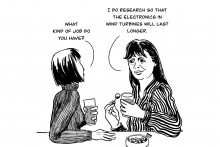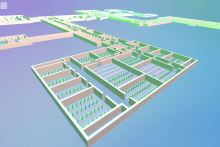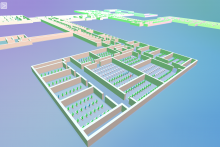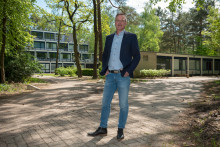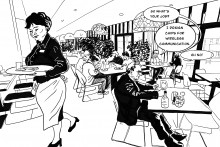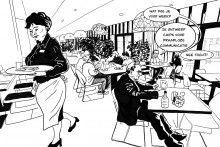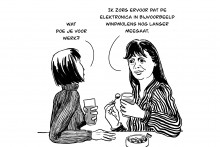Try to be the life at a party with semiconductor materials: Lis Nanver knows this is a nonstarter. Only for those who are really interested, she takes the trouble to explain it - her neighbour, for example. ‘I usually stick with the applications,’ she says. ‘My neighbour is in the windmill industry, so I will explain what my research can mean for windmills.’

Not that you ever see her tinkering with a windmill. Nanver conducts research into semiconductors for electronics. Semiconductors are materials for electronic components that only allow electrical current to pass from a certain voltage. Most semiconductors are made of silicon, ‘contaminated’ with other types of material. Nanver discovered during her research that you can also lay a thin layer of boron on pure silicon. The silicon thus changes into a semiconductor component that, among other things, breaks down less quickly. This discovery has been applied in ASML's chip machines, for example.
'With astronomy, you have a large group of lay people who can really participate in research'
Anyway, at any cocktail table or bar, you will rarely hear her about it. ‘Most people don't even know what silicon is, it's hard for them to get an idea of what I'm doing.’ She does thinks that's a shame. Nanver thinks it would be great to involve people from outside the university in her research. ‘That people could view a site and evaluate the data. With astronomy, you have a large group of lay people who can really participate in research by looking at the stars yourself. That seems wonderful to me.’
Unfortunately, there are few lay people who have a very expensive cleanroom, crammed with high-tech equipment. This is essential for her own research. For months on end, she and her team sit among those devices to lay paper-thin layers, measuring and analysing. In the meantime, they are under scrutiny themselves: do they get enough money, do they publish enough? ‘Keeping one's head above water is very hard,’ she sighs.
You barely read about that academic splatter in the newspaper. It mainly contains exaggerated stories about quantum computers, artificial intelligence and big data. ‘People think that everything is already possible. Largely nonsense, but that is because of how the media write about technology.’
Of course she loves her work. ‘Conducting research is just as exciting as figuring out who has committed a murder, everyone loves a ‘who-done-it’,’ she says enthusiastically. But the image of the scientist leaves something to be desired, she notes: as if scientists only go to conferences in distant countries and are living it up. Not the case. Well, except for that one Japanese colleague of hers. ‘He calculated that he spent a quarter of the time on the plane. I wonder if you can still do a lot of useful things in that case.’



